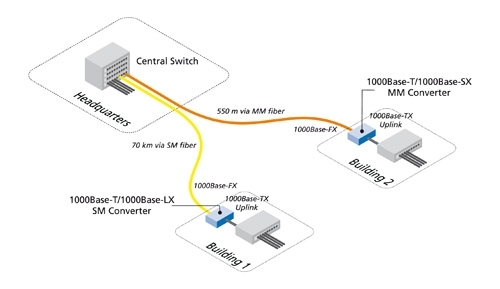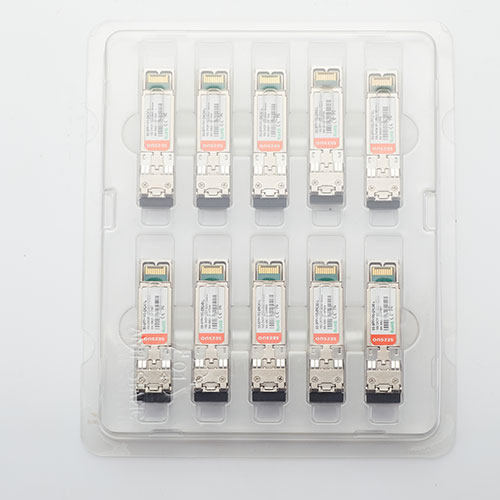- Related articles
- The difference between SFP and SFP+, XFP, QSFP, GBIC, BIDI
- Easiest Way to Know the History of Fiber Optic Cable
- All Cisco WS-G5486's information (List price, Specs, Datasheet PDF, Compatibility matrix)
- Optical Transceivers for Cisco N9K-X9636PQ= Switch
- The difference between GBIC and XFP
- Optical Transceivers for Cisco CGS-2520-24TC Switch
- The Difference between Fast Ethernet Card and Gigabit Ethernet Card
- What is PAM?
- Optical Transceivers for Cisco N3K-C3064PQ-10GX= Switch
- All Cisco DWDM-X2-39.77's information (List price, Specs, Datasheet PDF, Compatibility mat

Definition
1000 BASE transceivers are kind of small form-factor pluggable (SFP) transceivers. They are used for both telecommunication and data communications applications.1000 BASE transceivers links your switches and routers to the network. The hot-swappable input/output device plugs into a Gigabit Ethernet port or slot.
History
Ethernet was the result of the research done at Xerox PARC in the early 1970s. Ethernet later evolved into a widely implemented physical and link layer protocol. Fast Ethernet increased speed from 10 to 100 megabits per second (Mbit/s). Gigabit Ethernet was the next iteration, increasing the speed to 1000 Mbit/s. The initial standard for Gigabit Ethernet was produced by the IEEE in June 1998 as IEEE 802.3z, and required optical fiber. 802.3z is commonly referred to as 1000BASE and launches 1000 BASE transceivers.
Varieties
There are five physical layer standards for Gigabit Ethernet using optical fiber (1000BASE-X), twisted pair cable (1000BASE-T), or shielded balanced copper cable (1000BASE-CX). And that define the different kinds of 1000 BASE transceivers.1000 BASE transceivers incorporate significant interface circuitry and can only be used for gigabit Ethernet, as that is the interface they implement. They are not compatible with (or rather: do not have equivalents for) Fiber channel or SONET.

There are different types of 1000 BASE transceivers:
- 1000BASE-T SFP for Copper Networks
- 1000BASE-SX SFP for Multimode Fiber Only
- 1000BASE-LX/LH SFP for Both Multimode and Single-Mode Fibers
- 1000BASE-EX SFP for Long-Reach Single-Mode Fibers
- 1000BASE-ZX SFP for Long-Reach Single-Mode Fibers
- 1000BASE-BX10-D and 1000BASE-BX10-U SFP for Single-Fiber Bidirectional Applications
- 2-Channel 1000BASE-BX10-D for Single-Fiber Bidirectional Applications
- 1000BASE-BX40-D and 1000BASE-BX40-U for Single-Fiber Bidirectional Applications
- 1000BASE-BX80-D and 1000BASE-BX80-U for Single-Fiber Bidirectional Applications
- 100/1000BASE-LX SFP for Long-Reach Single-Mode Fibers
Applications
2-Channel 1000BASE-BX10-D for Single-Fiber Bidirectional Applications
1000BASE-BX40-D and 1000BASE-BX40-U for Single-Fiber Bidirectional Applications
1000BASE-BX80-D and 1000BASE-BX80-U for Single-Fiber Bidirectional Applications
100/1000BASE-LX SFP for Long-Reach Single-Mode Fibers
Conclusion
The Telecommunications Industry Association (TIA) created and promoted a standard similar to 1000BASE-T that was simpler to implement, calling it 1000BASE-TX (TIA/EIA-854). The simplified design would have, in theory, reduced the cost of the required electronics by only using two unidirectional pairs in each direction instead of four bidirectional pairs. However, this solution has been a commercial failure, likely due to the required cabling and the rapidly falling cost of 1000 BASE transceivers.
Please click to check more related concepts:
| Transceiver package | Ethernet standard | Fiber mode |
| SFP | 1000BASE- T | |
| GBIC | 1000BASE | |
| 1000BASE-SX | ||
| 1000BASE-X |






















































